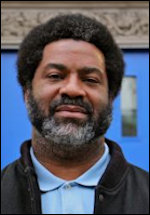
by James A. Bacon
Which position is more objectionable? Opposing a rezoning of Richmond schools to achieve greater racial balance on the grounds that it would eliminate neighborhood schools… or the unstated assumption that black kids need more white kids around them to perform better academically?
We can be assured that the the “neighborhood schools” argument will be tagged as retrograde. Indeed, for all practical purposes, it already has. But how about the black-kids-need-white-kids assumption? Isn’t that offensive, too?
Sen. Glen Sturtevant, R-Chesterfield, facing a tough re-election campaign, has made “Save Our Neighborhood Schools” a campaign issue. His district includes two white-majority elementary schools that would be merged with black-majority schools in a plan under consideration by the Richmond school system. Siblings would be split between schools, creating scheduling conflicts for parents, and fewer students would be able to walk and bike to school, he has argued.
Richmond Times-Dispatch columnist Michael Paul Williams has likened the neighborhood-schools rallying cry to the rhetoric of whites resisting de-segregation in the 1970s. “Save Our Neighborhood Schools was to the 1970s,” he writes today, “what Massive Resistance was to the 1950s.”
Mary Munford and William Fox elementary schools, which are located in predominantly white neighborhoods in Richmond, are integrated. Fox has 36% minority students, according to the Schooldigger website, while Mary Munford has 27% minority students. But combining those two schools with two majority-black schools would bring all four institutions closer to a 50/50 balance.
In a post last week, I asked what was the ideal ratio of white kids in a school. No one seems interested in answering that question. The logic seems to be simply that segregated schools are bad. Calls for protecting “neighborhood” schools — assigning students to schools based upon which residentially segregated neighborhood they live in — has the effect of perpetuating school segregation. Segregation is bad, and integration is a moral imperative. That is a defensible perspective.
But the argument against neighborhood schools in Richmond goes beyond that. School Superintendent Jason Kamras says that “diverse” schools improve academic performance. The unstated converse of that argument is that segregated schools hurt academic performance. The question arises: What difference does the presence of white kids make? Do white students project an aura that benefits the black students around them? Does white-kid knowledge rub off on black kids? Alternatively, is Kamras suggesting that kids from more affluent families rub off positively on kids from poor families (even though he has cast the issue in terms of race, not socio-economic status)?

Whatever the truth of such speculations, doesn’t anyone deem it racist to insinuate that black kids need to be around white kids in order to learn? Dunbar High School in segregated Washington, D.C., was famous for producing academically brilliant black graduates. Many observers have pointed to the superior performance of all-black student bodies in some charter schools. To quote Sharif El-Mekki, principal of one such school, “If you think excellence can’t exist in all-Black spaces, you are suffering from the internalization of white supremacy—whether you’re Black or White.”
To be totally clear, I am not advocating segregated schools! I am arguing that (1) black students don’t need whites around to succeed academically, and (2) it is wishful thinking to expect magical results from moving from a 65/35 white/minority ratio to a 50/50 white/minority ratio.
Rezoning is a distraction from what really ails Richmond schools. The fixation on racial balance stems from the recognition that the system is failing coupled with an unwillingness to grapple with the causes of that failure. Educators need to radically change their thinking on everything from pedagogy (whole-word reading? new math?) to school discipline (tolerating disruptive behavior) to creating the expectation that every student should pursue a college-preparatory curriculum. Not only is tinkering with racial ratios intellectually lazy, it is self-defeating if middle-class parents (white, black, or otherwise) relocate to Henrico or Chesterfield.
Misdiagnose the problem and then misdiagnose the cure. Apply the wrong cure and aggravate the problem. That seems to be the operational formula of the Richmond Public School system. And, so, the schools go from bad to worse.

Leave a Reply
You must be logged in to post a comment.